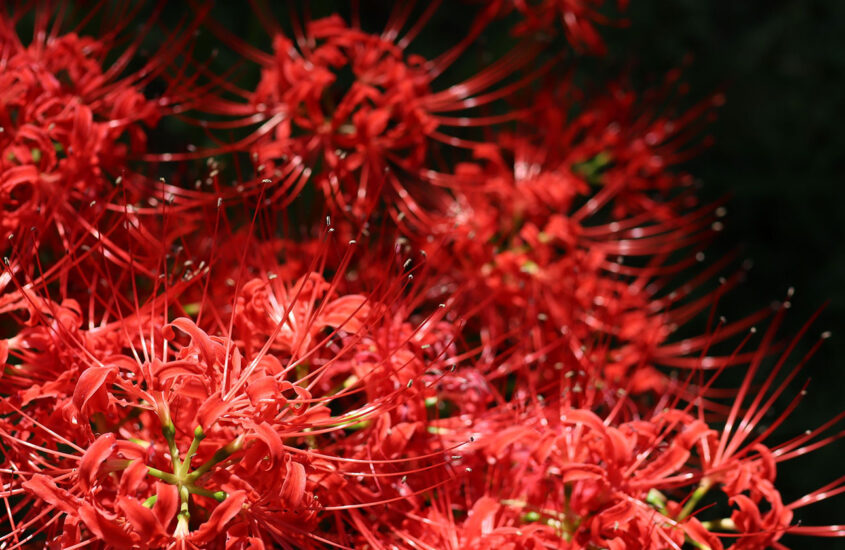H I M E K O

Deep in the mountains, there lived a flower demon. She wasn’t just any flower demon; she was unique. Unlike the sociable flower demons who lived together for safety and protection, she lived deep in the mountains alone, tending to the various unique flowers.
Her hair was white like the freshwater pearl, and it glowed iridescently like the full moon. She had bangs, a small braided rose bun on the crown of her head, and wore her hair down to her waist. Her skin was fair, her eyes as red as the higanbana, and her lips ombré with Sakura pink at the edge and red on the inner side. She donned a black clay-coloured kimono with red and gold higanbana prints, as well as a black okobo with gold straps. She had pointed elf ears and a red flower print on her forehead. Unlike other flower demons, she had small horns and could cast high-level spells due to her heritage and years of cultivation. She’s quiet, reserved, and sought to live a peaceful life amongst the rarest flowers. She was revered by all flower demons.
The tales of her beauty and demeanor had attracted many to seek her but to no avail. Her name? Tsukuyomi Himeko.
Flower demons were born from flower seeds or bulbs that absorbed corpses under the full moon, during the Ohigan. Negative emotions of the deceased were the source of a flower demon’s soul and mana. Hence flower demons possessed similar characteristics as the humans they absorbed; their names are derived from the human as well. Multiple flower demons born of the same corpse had weakened mana and lived in groups to stay protected.
Who did Himeko absorb and how was her name derived? Himeko’s predecessor was a princess who passed from a weak body and heartache. The heartbroken princess ran away from her palace one day and got lost in the forest. An elderly couple who found her did not know who she was but could tell that she was a noble lady from her garbs. They brought her back home and cared for her as their daughter since the princess refused to reveal her origins and status. The princess lived happily in the elderly couple’s home, but her health deteriorated and she eventually passed.
The princess only revealed her identity and story on her deathbed. She had chosen to love someone who her parents, the King and the Queen, disapproved of. Being stubborn and rebellious, she eloped with him but had her heart broken after. The princess regretted her actions, was too ashamed to return, and wanted to start anew. Her last wish to the old couple was to keep her existence with them a secret and to bury her body amongst beautiful flowers. The old couple granted her wish and buried her body amongst a field of higanbana, befitting of her mysteriousness and beauty; and to ward off scavenging animals. Little did they know, a higanbana bulb had sprouted next to the princess’ corpse. As the soul for a new flower demon formed, the plant coiled its roots around the princess’ body and absorbed her. When the elderly couple returned to pay their respects, they were greeted by a large white flower bud in place of the princess’ corpse. The flower bud was huge enough to contain a human child. The old couple believed that this was a sign from the heavens that the princess was a sacred person. So they returned daily to tend to it, pray and dedicate offerings.
On the day of the ohigan, the full moon shone on the flower bulb; it emitted an iridescent glow and bloomed. The large white petals fell apart to reveal a toddler of fair skin and iridescent pearl white hair, sitting in a fetal position. As she lifted her head, her gaze met that of the elderly couple, who were filled with such joy that tears welled up in their eyes. They harvested the petals, wrapped her with one, and carried her home.
Because she was born from the princess’ body, and had iridescent pearl white hair and skin as fair as snow, she looked like a moon goddess. Hence the couple bestowed the name “Tsukuyomi Himeko”.
Unlike the princess, Himeko was as gentle and quiet as a dove, always carrying an air of tranquility with her. The old couple found her a delight to have around the house; she helped with the chores and gave them company.
(To be continued…)




